The safety of your home and the health of its residents are the most critical considerations in the field of mold treatment. Mold removal requires specific knowledge and the appropriate equipment because it is frequently a silent and invisible threat. An unsung hero in the fight against mold, the air scrubber is one of these essential instruments. We'll examine the importance of air scrubbers in this post, including their need, function, and contrast with negative air machines. We'll also share our knowledge on how to set up and run air scrubbers for mold removal.
Air scrubbers help clean the air during mold remediation by removing harmful particles like mold spores, dust, and debris. These machines pull in dirty air, filter out contaminants using a HEPA filter, and release clean air back into the space. Since HEPA filters trap tiny particles as small as 0.3 microns, they are highly effective in improving indoor air quality.
By running continuously, air scrubbers reduce the number of mold spores in the air, making the environment safer and preventing further contamination. This is essential for protecting both residents and workers during mold cleanup.
Mold spores spread easily when disturbed, so keeping them contained is crucial. Air scrubbers help by constantly filtering the air and capturing airborne spores, stopping them from spreading to other areas.
In larger mold remediation projects, air scrubbers are often combined with negative air pressure systems. This setup ensures that contaminated air is pulled into a controlled space and doesn't leak into clean areas.
At FDP Mold Remediation, we use professional-grade air scrubbers to improve air quality and make mold removal safer. These machines are a key part of our process, helping to protect your home and health.

An air scrubber is a necessary tool for the mold removal procedure. This instrument works well at eliminating mold spores that could be dangerous to breathe in. Airborne mold spores can lead to allergies, respiratory issues, and other health issues. Thus, protecting against these dangers requires the use of air scrubbers.
Moreover, air scrubbers prevent cross-contamination by effectively capturing and holding airborne spores that can inadvertently be created during the mold removal procedure. Using air scrubbers ensures mold removal regulations are met while also demonstrating a commitment to safety.
Therefore, in order to safeguard the health and safety of tenants during mold remediation, an air scrubber is not only desirable but also required.
Even though the terms are often used equally, air scrubbers and negative air machines are not the same thing. For your mold restoration job, it's important to understand these differences.
The main job of air scrubbers is to clean the air by removing pollution like mold spores and particles. For successful air cleaning, they use HEPA filters that stop particles as small as 0.3 microns.
On the other hand, negative air machines halt the spread of pollution by creating negative air pressure within containment areas. They also use HEPA screens to keep the air contained and capture particles in the air.
Both tools are essential for getting rid of mold, but they do different things. During mold cleanup, air scrubbers improve the quality of the air inside, and negative air machines keep affected areas separate. At FDP Mold Remediation, we know how important these tools are to getting rid of mold and using them in a smart way to get the best results.
For the best results, an air scrubber should be placed in the affected area where mold spores are most concentrated. Positioning the machine in the center of the room or near the mold-affected surfaces allows it to capture airborne spores effectively. It is also important to keep doors and windows closed in the containment area to prevent outside air from interfering with filtration.
Regular filter maintenance is key to keeping an air scrubber working properly. HEPA filters should be checked and replaced as needed to ensure they continue trapping mold spores effectively. Many air scrubbers also come with built-in indicators that signal when filters need to be changed. In addition, air quality monitoring should be performed throughout the mold remediation process to measure effectiveness and ensure safe indoor air conditions.
Once the mold removal process is complete, the air scrubber should be carefully turned off and removed. Before moving it, filters should be sealed and disposed of properly to prevent releasing trapped spores back into the air. The machine itself should also be cleaned and disinfected before being used again. At FDP Mold Remediation, our team follows strict procedures to ensure that air scrubbers are handled correctly to maintain a clean and safe environment after remediation.
Air scrubbers are very important for getting rid of mold because they keep the air clean, stop cross-contamination, and protect our workers and your property. You can count on FDP Mold Remediation to get rid of mold effectively.
With great care, our mold experts carefully enter containment areas. They use modern tools such as air scrubbers, dehumidifiers, and personal protective equipment (PPE) to make sure the cleanup process is safe and effective. We promise to take care of your mold problems in a professional way.
Get in touch with us right away to set up a meeting and start the process of getting rid of mold in your home. Remember that your health and safety are the most important things to us.



